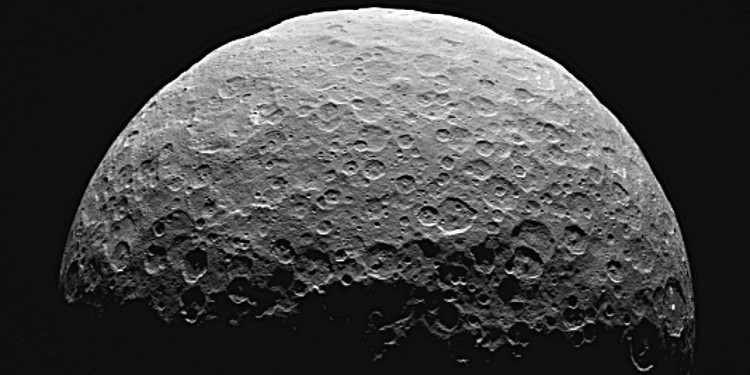
Researchers report on findings from Dawn space mission
In 2015 the Dawn spacecraft reached the asteroid Ceres, the largest celestial body in the so-called asteroid belt between Mars and Jupiter. The data collected by Dawn will make it possible for scientists to analyse the geological properties of Ceres and understand its origins. The latest issue of the "Science" journal contains reports by several international teams of researchers on their findings. For the first time, they are able to provide a comprehensive description of the asteroid. One of the studies was carried out by a team headed by Prof. Harald Hiesinger from the Institute of Planetology at Münster University. The scientists involved examined the crater structures on the asteroid’s surface.
One of the things the researchers demonstrated was that the asteroid’s surface is marked by numerous impact craters of various shapes and sizes – a result of collisions with other celestial bodies. The condition of the craters indicates that the asteroid’s surface consists of rock and ice. However, the finds contradict predictions that the rock crust would contain a higher proportion of ice. "In that case," as Harald Hiesinger explains, "the craters wouldn’t be so stable. In the long run they would actually dissolve and would no longer be recognizable after a certain time. If that were so, we would have seen far fewer craters." Hiesinger, a planetologist, undertook the work at Münster together with Jan Hendrik Pasckert, a doctoral student at the Institute of Planetology at Münster University.
The researchers also determined the age of deposits on one of the oldest craters, called Kerwan. According to their calculations, the deposits were formed sometime between 550 and 720 million years ago, which indicates geological activity at this time.
In the course of their work, one of the things which the scientists did was to evaluate topographical maps of the asteroid’s surface. These maps were created using a special so-called framing camera on board the Dawn spacecraft. Scientists use the frequency distribution of craters on the surface to help determine their age. In doing so, they employed two different models. One of these is based on the crater history of the earth’s moon, which has already been well researched by means of rock samples. The second model uses the latest observations of the asteroid belt in order to draw conclusions regarding the history of the craters on Ceres. The results provided by the different models vary considerably, depending on age.
The Münster scientists are also involved in other Ceres studies published in the latest issue of "Science", including one on the forms of volcanism on the asteroid and one on the characteristics of its surface. What scientists hope to find out from examining the asteroid are pointers to the development of the early solar system.
The Dawn spacecraft has been travelling since 2007. Its first destination was the asteroid Vesta. It then headed towards Ceres, which it reached in 2015. The spacecraft is currently orbiting the asteroid Ceres at a distance of 375 kilometres above it, from where high-resolution images can be taken. The mission is being run by the Jet Propulsion Laboratory (JPL) at the US space agency NASA. The JPL is a division of the California Institute of Technology in Pasadena. The University of California in Los Angeles is responsible for the scientific part of the mission. The camera system on board the spacecraft was developed and constructed under the leadership of the Max Planck Institute of Solar System Research at Katlenburg-Lindau, in cooperation with the Institute of Planetary Research at the German Aeronautics and Space Centre (DLR) in Berlin and the Institute of Computer and Network Engineering in Brunswick. It consists of two identical cameras. The camera project is being funded by the Max Planck Society, the DLR and NASA/JPL.
Original publication:
Hiesinger H. et al. (2016): Cratering on Ceres: Implications for its crust and evolution. Science 02 Sep 2016: Vol. 353, Issue 6303, DOI: 10.1126/science.aaf4759
